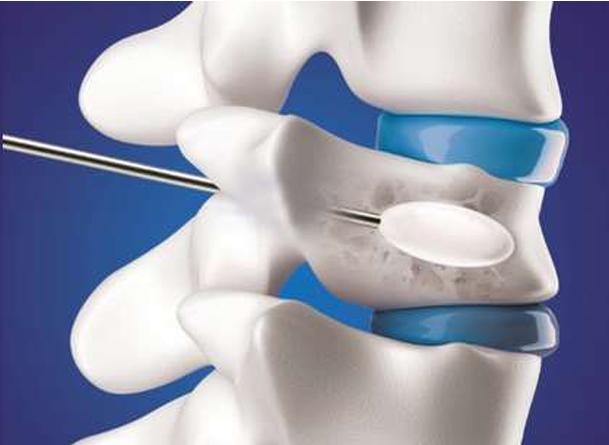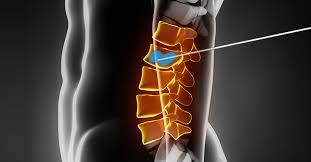Percutaneous Balloon Kyphoplasty
Treatment > Percutaneous Balloon Kyphoplasty

Percutaneous Balloon Kyphoplasty
Balloon kyphoplasty is a minimally invasive procedure designed to repair vertebral compression fractures (VCFs) by reducing and stabilizing the fractures. It treats pathological fractures of the vertebral body due to osteoporosis, cancer, or benign lesions.
How balloon kyphoplasty works
The goal of balloon kyphoplasty surgery is to relieve pain, restore lost vertebral body height, and stabilize the fracture. The procedure involves the insertion of two inflatable bone tamps (balloons), or IBTs, into the vertebrae. The IBTs are inflated under volumetric control, reducing the fracture and pushing the endplates apart, thereby partially restoring vertebral height and correcting angular deformity.3 The newly formed cavity is filled with bone cement after IBT removal.
Who are Candidates for Balloon Kyphoplasty ?
Patients with Vertebral Compression fractures due to Osteoporosis or tumours may need this procedure.
Procedure steps and duration
- Through a pair of small incisions, each approximately 1 cm in length, the specialty physician uses a needle and cannula to create a small pathway into each side of a fractured vertebral body. A small balloon is guided through each cannula into the vertebra. Each balloon is carefully inflated to raise the collapsed vertebra and return it to its normal position. Inflation of the balloon creates a void (cavity) in the vertebral body.
- Once the vertebra is in the correct position, the balloons are deflated and removed. The resultant cavities are filled with bone cement forming an “internal cast” to support the surrounding bone and prevent further collapse.
- The balloon kyphoplasty procedure typically takes less than an hour per fracture and may be performed in an outpatient setting. The procedure can be done using either local or general anesthesia; the specialty physician will determine the most appropriate method, based on the patient’s overall condition.
What are the benefits of kyphoplasty?
The benefits of kyphoplasty include:
- Reduces or eliminates pain caused by compression fractures.
- Prevents kyphosis (hunched-over posture).
- Minimally invasive and short procedure time.
- No physical therapy or rehabilitation required after.
What are the complications or side effects of kyphoplasty?
Complications are rare for kyphoplasty procedures but could include:
- Infection or bleeding.
- Increased pain, numbness or tingling.
- Nerve damage.
- Additional fractures (if you have osteoporosis).
- Cement migrates to other parts of your body (can lead to pulmonary embolism or spinal stenosis).
To avoid these risks, especially your risk of additional fractures, your healthcare provider will ensure that you’re taking medications to improve your bone quality if you have osteoporosis.


